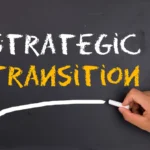In the ever-evolving landscape of e-commerce, a thriving online business is more than just a storefront and a product catalog. It’s a meticulously crafted digital ecosystem, powered by a robust technology stack – the intricate network of software tools, platforms, and infrastructure that orchestrates every click, transaction, and customer interaction. For a potential buyer, delving into this digital backbone is akin to exploring the heart of the business. By thoroughly assessing the technology stack, you gain invaluable insights into the e-commerce venture’s operational efficiency, growth potential, and any hidden complexities that might lurk beneath the surface.
This comprehensive guide equips you with the knowledge and strategies to navigate this crucial evaluation process. We’ll delve into ten key aspects to consider when assessing the technology stack of an e-commerce business up for grabs, empowering you to make informed investment decisions and ensure long-term success.
1. The E-commerce Platform: The Foundation of Your Digital Empire
The e-commerce platform serves as the cornerstone of your online store. It’s the platform upon which you build your digital storefront, manage your product inventory, and orchestrate the entire customer journey. Here, the focus lies on identifying which platform the business currently operates on (think industry stalwarts like Shopify, WooCommerce, or Magento) and evaluating its suitability for your specific needs and vision.
Unveiling the Suitability:
- Ease of Use: Consider your technical expertise and comfort level with the platform’s interface. An intuitive platform like Shopify can be ideal for beginners, while seasoned users might favor the extensive customization capabilities offered by Magento.
- Scalability: Will the platform be able to accommodate your future growth aspirations? If the business currently operates on a limited platform, can it seamlessly scale to support a surge in traffic and transactions as you expand your reach?
- Customization Capabilities: Does the platform offer sufficient flexibility to tailor the online store’s design and functionality to your unique brand identity and customer needs? Consider the level of customization required to achieve your desired user experience.
- Integration Options: The e-commerce platform’s ability to integrate seamlessly with other essential tools and services is paramount. Explore the available integrations with payment gateways, shipping providers, marketing automation tools, and other critical components of your digital ecosystem.
Matching the Platform to Your Vision:
Beyond technical considerations, ensure the platform aligns with your long-term vision for the business. Are you looking for a user-friendly platform to manage a niche store, or do you require a highly customizable solution to launch a sprawling marketplace? Understanding your goals will guide you towards selecting the platform that best serves your strategic roadmap.
2. Website Performance and User Experience: Ensuring a Seamless Customer Journey
The website is the face of your e-commerce business, the digital space where potential customers form their first impression. A meticulously crafted user experience (UX) is crucial for converting visitors into loyal patrons. Here, a thorough review of the website’s performance and user experience is essential.
Optimizing for Success:
- Website Loading Speed: Speed is king in the digital world. Assess the website’s loading speed across various devices and browsers. Slow loading times can significantly impact conversion rates, pushing impatient customers to your competitors.
- Navigation Structure: Is the website’s navigation intuitive and user-friendly? Can customers easily find the products they’re searching for, or does the website’s layout create a sense of confusion and frustration?
- Mobile Responsiveness: In today’s mobile-first world, a website that flawlessly adapts to different screen sizes is non-negotiable. Evaluate how the website responds on smartphones and tablets, ensuring a seamless and engaging experience for mobile users.
- Overall Design Aesthetics: The website’s visual appeal plays a significant role in brand perception. Analyze the website’s design elements, layout, and overall aesthetic, considering how it aligns with your brand identity and target audience.
Beyond the Surface:
Look beyond the website’s aesthetics and delve into the technical aspects of user experience. Are there any usability issues, such as broken links or unresponsive buttons, that hinder customer navigation? Does the website utilize features like product filtering and search functionality to enhance the user journey? Identifying and addressing these elements ensures a smooth and satisfying customer experience.
3. The Unsung Hero: Assessing Hosting Infrastructure and Reliability
The hosting infrastructure acts as the unseen foundation upon which your entire e-commerce operation rests. It’s the server space that houses your website’s files and databases, ensuring smooth website operation and seamless customer interactions. Here, a critical evaluation of the hosting infrastructure’s reliability and scalability is essential.
- Reliable Hosting Provider: Is the business utilizing a reputable hosting provider with a proven track record of uptime and security? Frequent downtime due to server issues can cripple your online sales and damage customer trust.
- Scalability: Can the current hosting plan accommodate anticipated growth in traffic and data storage needs? Evaluate the scalability options offered by the hosting provider to ensure smooth operation as your business expands.
- Peak Performance: Investigate the website’s performance during peak traffic periods, such as holidays or marketing campaigns. Does the hosting infrastructure have the capacity to handle surges in traffic without compromising website performance?
- Cost Considerations: Hosting costs can vary significantly depending on the plan and provider. Evaluate the current hosting expenses and factor in potential upgrades or migrations necessary to accommodate future growth.
4. The Power of Collaboration: Reviewing Integration with Third-Party Tools
No e-commerce business operates in isolation. A robust ecosystem of interconnected tools and services streamlines operations, automates tasks, and empowers you to deliver a superior customer experience. Here, the focus is on identifying the third-party tools currently integrated with the e-commerce platform.
A Symphony of Functionality:
- Payment Gateways: Evaluate the payment gateways currently integrated with the platform. Do they offer a secure and convenient checkout experience for customers, supporting popular payment methods?
- Shipping Providers: Assess the integration with shipping providers. Does the platform offer real-time shipping rates and a variety of shipping options to cater to customer needs and preferences?
- Inventory Management Systems: A seamless integration with an inventory management system ensures accurate stock levels, reduces the risk of overselling, and facilitates efficient order fulfillment.
- Marketing Automation Tools: Explore the integration with marketing automation tools for tasks like email marketing, social media scheduling, and customer segmentation. These tools streamline marketing efforts and personalize customer interactions.
- Customer Relationship Management (CRM): A CRM system helps manage customer interactions, track order history, and personalize communication. Evaluate the integration with a CRM to assess its effectiveness in fostering customer loyalty.
Beyond Integration:
While seamless integration is crucial, delve deeper to understand any contractual obligations associated with these third-party services. Are there any long-term contracts in place that may impact your post-acquisition operations? Also, consider the compatibility of these tools with your existing technology stack, ensuring a smooth integration if necessary.
5. Building Trust: Examining Data Security Measures
Data security is paramount in e-commerce, especially with heightened consumer privacy concerns and evolving regulatory landscapes. A data breach can have devastating consequences, eroding customer trust and potentially incurring hefty fines. Therefore, a thorough examination of the e-commerce business’s data security measures is essential.
Fortifying Your Digital Vault:
- SSL Encryption: Verify if the website utilizes Secure Sockets Layer (SSL) encryption, which safeguards sensitive customer data like credit card information during online transactions.
- PCI Compliance: For businesses processing credit card payments, Payment Card Industry (PCI) compliance is mandatory. Assess the business’s adherence to PCI Data Security Standards (DSS) to ensure the secure storage and transmission of credit card data.
- Data Backup Protocols: Evaluate the data backup protocols in place. Regular backups safeguard your website data and customer information from unforeseen events like server failures or cyberattacks.
- Cybersecurity Measures: Explore the cybersecurity measures implemented by the business to protect against hacking attempts and malware infections. This may include firewalls, intrusion detection systems, and security software updates.
Past as Prologue:
Investigate any past security incidents or data breaches the business may have experienced. Understanding the nature of the breach, the remediation strategies employed, and the lessons learned can be valuable insights in bolstering your own cybersecurity posture post-acquisition.
6. Making Informed Decisions: Analyzing Analytics and Reporting Capabilities
Data is the lifeblood of any successful e-commerce business. Robust analytics and reporting capabilities empower you to track key performance indicators (KPIs), gain insights into customer behavior, and make data-driven decisions to optimize your marketing campaigns and overall business strategy.
Unlocking the Power of Data:
- Analytics Tools: Identify the analytics tools currently utilized by the business. Popular options include Google Analytics, Adobe Analytics, and ecommerce-specific platforms that provide in-depth customer behavior data.
- Key Performance Indicators (KPIs): Evaluate the KPIs tracked by the business, such as website traffic, conversion rates, customer acquisition costs (CAC), and return on investment (ROI). Understanding these metrics allows you to gauge the business’s performance and identify areas for improvement.
- Comprehensiveness and Accuracy: Assess the comprehensiveness and accuracy of the data analytics. Does the data provide actionable insights to inform strategic decision-making, or are there gaps or limitations in the reporting capabilities?
- Marketing Campaign Optimization: Evaluate how the business utilizes analytics to optimize marketing campaigns. Does the data reveal which channels are most effective in driving traffic and conversions?
Beyond the Numbers:
While understanding the metrics is crucial, delve deeper to explore how the data is presented and utilized. Are there clear dashboards and reports that provide easily digestible insights, or is the data analysis process overly complex and time-consuming? A user-friendly reporting structure empowers you to leverage data effectively and make informed decisions.
7. Building for the Future: Assessing Scalability and Technical Debt
The e-commerce landscape is constantly evolving, and a business’s technology stack needs to be adaptable to keep pace. Here, the focus shifts to assessing the scalability of the existing technology infrastructure and identifying any potential technical debt.
Scaling for Success:
- Future Growth Plans: Consider the business’s anticipated growth trajectory. Can the current technology stack accommodate a significant increase in traffic, product offerings, and order volume without compromising performance?
- Infrastructure Capabilities: Evaluate the server capacity, database architecture, and overall infrastructure capabilities. Are there limitations that might hinder scalability in the future?
- Technical Debt: Technical debt refers to outdated software versions, inefficient coding practices, or accumulated technical shortcomings. Assess the presence of technical debt and the potential costs associated with remediation or upgrades to ensure long-term scalability.
Investing in the Future:
Don’t shy away from identifying potential scalability challenges. These insights can be leveraged during negotiations to factor in upgrade costs or future infrastructure investments. By addressing technical debt upfront, you ensure your e-commerce business is equipped for sustainable growth.
8. The Cost Factor: Evaluating Development and Maintenance Costs
Technology doesn’t run on passion alone; it requires ongoing investments. Here, the focus is on estimating the financial implications of maintaining and upgrading the technology stack post-acquisition.
Counting the Costs:
- Software Licenses: Evaluate the software licensing agreements associated with the various tools and platforms used by the business. Are there recurring subscription fees or perpetual licenses?
- Developer Fees: Investigate any ongoing developer fees associated with maintaining the website or custom integrations. Factor in potential costs for future upgrades or customizations.
- Platform Upgrades: Certain platforms may require periodic upgrades to maintain functionality and security. Evaluate the upgrade costs associated with the e-commerce platform and other software used by the business.
- IT Infrastructure Investments: As the business scales, investments in additional server capacity or enhanced security measures may be necessary. Factor in these potential costs when evaluating the overall financial picture.
Planning for Sustainability:
By understanding the ongoing development and maintenance costs, you can create a more realistic financial projection for the acquired business. These insights also empower you to make informed decisions about future technology investments to optimize performance and achieve your growth goals.
9. Seeking Expertise: Engaging Technical Experts for Due Diligence
A comprehensive due diligence process is paramount before acquiring an e-commerce business. While financial and legal considerations are crucial, neglecting the technical aspects could lead to unforeseen challenges down the road. Here, the value of engaging technical experts comes into play.
The Power of Expertise:
- IT Consultants: Hiring IT consultants with experience in e-commerce technology can provide an in-depth evaluation of the technology stack. They can identify potential risks, hidden complexities, and scalability limitations.
- Developers: Developers can assess the code quality, identify potential security vulnerabilities, and evaluate the feasibility of future integrations with your existing technology stack.
- Expert Insights: Leverage the expertise of these technical professionals to gain valuable insights that might be overlooked during a purely financial or legal due diligence process.
Beyond the Report:
Don’t settle for a static report. Engage with the technical experts to discuss their findings and ask follow-up questions. Their insights can help you navigate potential roadblocks proactively and ensure a smooth transition post-acquisition.
10. Negotiation Leverage: Using Technical Findings to Make Informed Decisions
The information gleaned from evaluating the technology stack doesn’t just paint a picture of the current state; it also provides valuable leverage during acquisition negotiations.
Negotiating for Success:
- Highlighting Strengths: Showcase the identified strengths and functionalities of the technology stack. This could include a user-friendly platform, robust integrations, or a well-maintained codebase. These strengths can translate into cost savings or a competitive advantage.
- Addressing Weaknesses: Don’t shy away from identifying potential weaknesses in the technology stack, such as scalability limitations, technical debt, or outdated software versions. Use these findings to negotiate for concessions or price adjustments to account for future upgrades or remediation costs.
- Transition Support: Negotiate the scope and duration of transition support from the seller. This could include assistance with data migration, platform training, or access to technical resources to ensure a smooth handover and minimize post-acquisition disruption.
- Contractual Obligations: Review any existing contracts related to software licenses, third-party integrations, or ongoing IT support services. Ensure these contracts are favorable and don’t create unforeseen financial burdens post-acquisition.
- Beyond the Negotiation Table:
- Remember, a successful acquisition goes beyond securing the best possible deal. The goal is to establish a foundation for long-term success. By leveraging the insights gained from your technology stack assessment, you can:
- Develop a Strategic Roadmap: Identify areas for improvement and prioritize technology upgrades or platform migrations to optimize performance and support future growth initiatives.
- Budget for Success: Factor in the ongoing costs of maintaining and optimizing the technology stack when creating your financial projections. This ensures you have the resources necessary to keep your e-commerce business running smoothly and scaling effectively.
- Building a Strong Team: Evaluate the need to expand your team with additional technical expertise. This might involve hiring developers, IT specialists, or data analysts to manage and optimize the technology stack effectively.
Buy and Sell Online Businesses with Macbook Monster
Conclusion: Investing in a Sustainable Future
Assessing the technology stack of an e-commerce business for sale is not just a box-checking exercise; it’s an investment in the future of your venture. By delving into the intricacies of the digital backbone, you gain a deeper understanding of the business’s operational efficiency, growth potential, and any hidden complexities. This knowledge empowers you to make informed decisions during the acquisition process and navigate the post-acquisition phase with greater clarity and confidence.
Remember, a well-maintained and optimized technology stack is not just a collection of tools; it’s the engine that drives your e-commerce business forward. By adopting a proactive approach to technology assessment and strategic investment, you position your e-commerce venture for long-term success in the ever-evolving digital landscape.







